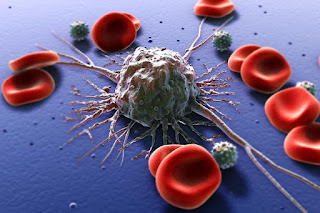Early-stage embryos with abnormalities can still develop into healthy babies
http://www.sanger.ac.uk/news/view/early-stage-embryos-abnormalities-can-still-develop-healthy-babies
Excerpt: "Abnormal cells in the early embryo are not necessarily a sign that a baby will be born with a birth defect such as Down’s syndrome, suggests new research from the University of Cambridge, the Wellcome Trust Sanger Institute and the University of Leuven, Belgium. In a study published today (29 March) in the journal Nature Communications, scientists show that abnormal cells are eliminated and replaced by healthy cells, repairing – and in many cases completely fixing – the embryo.
Researchers at the Department of Physiology, Development and Neuroscience at Cambridge report a mouse model of aneuploidy, where some cells in the embryo contain an abnormal number of chromosomes. Normally, each cell in the human embryo should contain 23 pairs of chromosomes (22 pairs of chromosomes and one pair of sex chromosomes), but some can carry multiple copies of chromosomes, which can lead to developmental disorders. For example, children born with three copies of chromosome 21 will develop Down’s syndrome.
Pregnant mothers – particular older mothers, whose offspring are at greatest risk of developing such disorders – are offered tests to predict the likelihood of genetic abnormalities. Between the 11th and 14th weeks of pregnancy, mothers may be offered chorionic villus sampling (CVS), a test that involves removing and analysing cells from the placenta. A later test, known as amniocentesis, involves analysing cells shed by the foetus into the surrounding amniotic fluid – this test is more accurate, but is usually carried out during weeks 15-20 of the pregnancy, when the foetus is further developed.
Professor Magdalena Zernicka-Goetz, the study’s senior author, was inspired to carry out the research following her own experience when pregnant with her second child. At the time, a CVS test found that as many as a quarter of the cells in the placenta that joined her and her developing baby were abnormal: could the developing baby also have abnormal cells? When Professor Zernicka-Goetz spoke to geneticists about the potential implications, she found that very little was understood about the fate of embryos containing abnormal cells and about the fate of these abnormal cells within the developing embryos.
Fortunately for Professor Zernicka-Goetz, her son, Simon, was born healthy.
In research funded by the Wellcome Trust, Professor Zernicka-Goetz and colleagues developed a mouse model of aneuploidy by mixing 8-cell stage mouse embryos in which the cells were normal with embryos in which the cells were abnormal. Abnormal mouse embryos are relatively unusual, so the team used a molecule known as reversine to induce aneuploidy.
In embryos where the mix of normal and abnormal cells was half and half, the researchers observed that the abnormal cells within the embryo were killed off by ‘apoptosis’, or programmed cell death, even when placental cells retained abnormalities. This allowed the normal cells to take over, resulting in an embryo where all the cells were healthy. When the mix of cells was three abnormal cells to one normal cell, some of abnormal cells continued to survive, but the ratio of normal cells increased."
My comment: The control and regulation of embryonic cells doesn't occur from inside the embryo. Short non coding maternal and paternal RNA molecules direct the embryonic and fetal development. Genes are not drivers or controllers. Traits are shared during the embryonic development after epigenetic reprogramming that erases all epigenetic markers except the methylation of the innate immune system associated genes. The mechanism is awesome and points to Intelligent Design and Creation.
https://www.ncbi.nlm.nih.gov/pmc/articles/PMC4500606/
"A myriad of locally produced factors into the microenvironment of the reproductive tract is regulated, not one-way but rather, through embryonic–maternal cross-talk. In this mini-review, we focused on the exosomes, which are cell-derived vesicles of 30–100 nm in diameter, as a communicating language facilitating this dialog. These nanovesicles are secreted from pre-implantation embryos, oviduct epithelium, and endometrium as well as from the placenta, and contain proteins, messenger RNA (mRNA), microRNA, and DNA cargoes, and have pleiotropic effects on both embryonic and maternal environments. A better understanding of the molecular mechanisms mediating this cross-talk will lead to the development of new regulating agents, with novel diagnostic, biological, and therapeutic potential for either supporting or hindering the normal reproductive functions."
 My comment: So far, we've been taught that Diabetes I and II are caused by genetic mutations. For example:
My comment: So far, we've been taught that Diabetes I and II are caused by genetic mutations. For example:
















